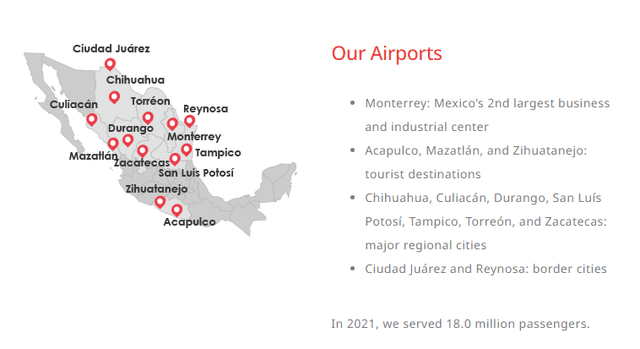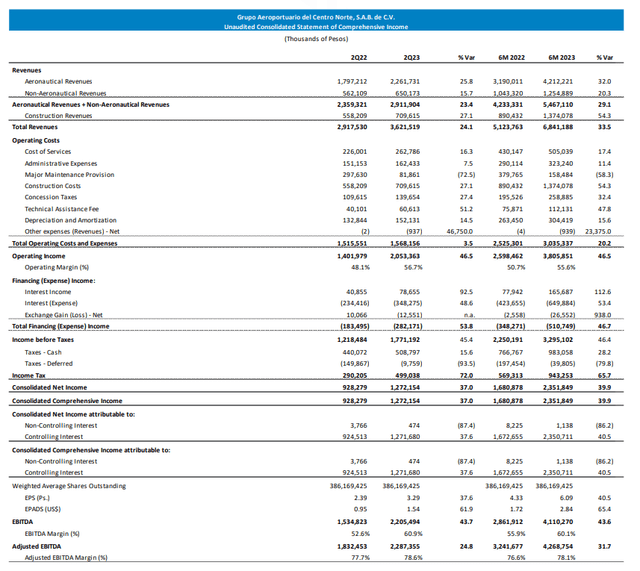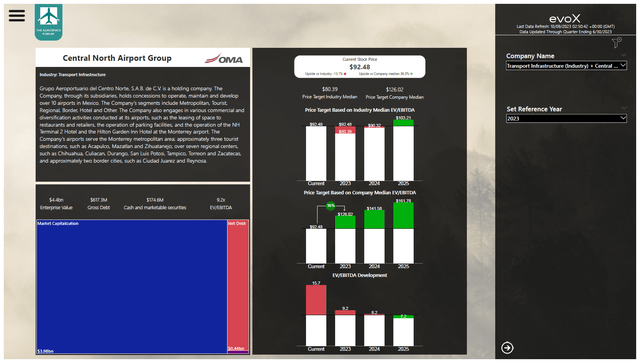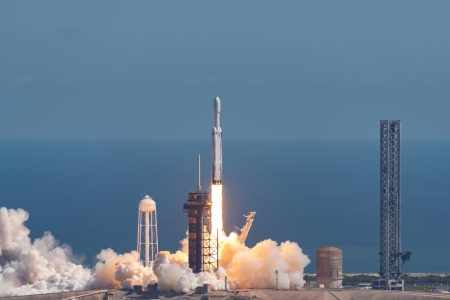I recently reviewed my ratings for some Mexican airport stocks. I downgraded Grupo Aeroportuario del Sureste (ASR) stock from Buy to Hold due to lacking fundamental upside for this year based on various criteria while I maintained my buy rating for Grupo Aeroportuario del Pacífico (PAC) based on significant undervaluation compared to its median EV-to-EBITDA.
In this report, I will be adding Grupo Aeroportuario del Centro Norte, S.A.B. de C.V. (NASDAQ:OMAB) to my coverage.
How Do Airports Make Money?
Let’s first answer a very basic question to understand how airports make money. The revenue stream consists of two parts, the first one is aeronautics revenues that include landing and departure fees, passenger charges, terminal space rentals, security, and aircraft parking. The second stream is non-aeronautical revenues which include things like car parking, car rental, ground transportation, retail, food and beverages and fast track.
So, there are two revenue streams that are well-suited to capitalize on the travel rebound. On one hand, we have airlines increasing their flight schedules again, which benefits the airline via aeronautical revenues. On the other hand, the passengers are returning to the terminal halls, and they have money to spend, which benefits the commercial revenues which form a big portion of the non-aeronautical revenues.
So, for an airport to make money, you must appeal to airlines providing smooth operations and offer travelers a unique experience.
How Many Airports Does Grupo Aeroportuario del Centro Norte Have?
Grupo Aeroportuario del Centro Norte
Grupo Aeroportuario del Centro Norte, S.A.B. de C.V. better known as OMA, holds the concessions to operate, manage, and develop 13 international airports in central and northern Mexico.
If you think of Mexico as a tourist destinations with white beaches and turquoise waters, OMA is not the airport stock you would want to invest in. However, not having Cancun airport in the portfolio or Bávaro Airport in the Dominican Republic such as competitor ASR is not something that is a disadvantage to OMA. OMA has another strength, which might be more prevalent over the coming years, and that is Monterrey International Airport which is placed in the heart of the 2nd biggest business and industrial center of Mexico meaning that investment in OMA is a perfect bet on the nearshoring trend.
What Is Nearshoring?
Nearshoring is the placement of activities to a relatively close region or country to complete services or manufacture goods. Often the benefits of nearshoring are that goods and services can be rendered and produced at lower costs.
Airport Investment To Ride The Nearshoring Trend
For OMA, the investment thesis mostly centers on this trend. If we look at the map of OMA, we can already see why. Besides the airport in the second biggest business and industrial district of Mexico, the company operates two airports close to the border with the US. In the current geographical landscape which has shifted significantly in the past few years, nearshoring to Mexico has become a very viable option as geopolitical and trade tensions between China and the US mounted.
As a country with lower wages, Mexico provides a perfect nearshoring opportunity for U.S. companies. Nearshoring by no means is a new phenomenon, but the existing tensions have given nearshoring a boost.
Tesla
Probably the best example is Tesla (TSLA), which will build its Gigafactory 6 near Monterrey. Expectations are that Tesla will start production in 2025, which means that before that point the supply chain should start moving some activities to Mexico and most likely to Monterrey. The North American trade pact that will take effect in 2027 will also require steel production in the region for which Mexico would be the perfect location as it can also support the automobile manufacturing industry. Tesla is not the only major company to bring its activities to Mexico. Foxconn recently announced agreements with the government of Chihuahua to add manufacturing capacity with a $500 million investment focused on supporting high-end manufacturing.
Focused on reducing reliance or shielding itself from the critical semiconductor capacity from Taiwan which is in a rather delicate position, there is also a huge potential for the semiconductor industry to add capacity and nearshore to Mexico. So, the nearshoring trend is not limited to Tesla and its supply chain but could be significantly bigger as Mexico will become a manufacturing hub for a North American production ecosystems and OMA is positioned right in the center of it with Monterrey International Airport.
The geopolitical US-China tensions are not the only reason for the boost in nearshoring. The pandemic which saw China closing for business extremely fast has also made the world aware it cannot rely on a single manufacturing hub for the world. So, even in the unlikely event that in the near-term US-China relations fully normalize, it is unlikely we will see a strong reversal in the nearshoring trend. It could weaken, but investments made today are not reversed overnight and non focusing manufacturing capacity into a single spot for the entire world remains a necessity. Furthermore, with more focus on ESG not having to ship products from Asia to the US which can be a 20 day and 7,500 miles trip from Hong Kong to Los Angeles on a polluting container ship can provide another boost to nearshoring as the US border is little over 100 miles away from Monterrey which could significantly cut logistics costs and time.
Beyond attracting nearshoring activity, there are also subsequent boosts for Mexico. Real estate prices could flourish and Mexico might become even more attractive for foreign investments where it had no appeal before.
For OMA it means that it can build on sustained business travel demand that only is expected to move with manufacturing demand and it can also diversify its operations. The company is already building industrial warehouses and the company can take a bigger pie of the value that nearshoring will provide while lodging demand and higher value international flight connections will also increase.
What Is The Biggest Risk For OMA Airports?
Probably the same as the biggest opportunity: Nearshoring. While I do not expect the trend to weaken in the years to come, nearshoring and the reliance on manufacturing can also provide a headwind to OMA in two ways. The first is that, while unlikely, the nearshoring trend could be less strong than expected and secondly in case demand in North America for the goods produced in Mexico declines so will the positive impact on air travel demand to and from Mexico. The latter will likely be the case when economic growth in the region as a whole declines.
A possible pressure on the share prices could be any delay to the opening of the Tesla facility in Monterrey, but any potential delay should have a temporary impact on the stock price as Tesla-related growth might be delayed but other nearshoring activities are unlikely to be delayed or in other words it is not just Tesla that makes the buy case for the stock. Another risk is the gang violence in Mexico.
Grupo Aeroportuario del Centro Norte
So, I believe in the nearshoring trend, but one of the things we have to do is have a look at how the company is currently performing. Do we already see nearshoring trends impacting OMA? Revenues excluding pass through construction revenues grew by 23.4% on 12.8% growth in passenger traffic. The revenue of Aeronautical activities increased 25.8% to 1.6 billion pesos driven by higher passenger traffic coupled with higher tariffs and a slight increase in flight activities partially offset by lower cargo units.
The non-aeronautical revenues increased by 15.7% driven by 23.3% growth in commercial activities such as parking, lounges and retail. Diversification revenues which include the industrial warehouses services grew 4.5% with 20% growth in real estate services, 13.5% growth in hotel services and 10% growth in Industrial services.
The operating costs grew by 3.5% which is favorable in comparison to the topline growth and was driven by higher payroll costs in connection to an increase in minimum wages in Mexico and higher minor maintenance costs higher costs for hotel services and higher taxes, technical fees and construction costs offset by lower major maintenance provisions. There are a lot of parts that go into the cost mix for OMA but it seems the company did quite well overall. However, it is fair to exclude pass through costs in which case we see a cost decline of 10.3% which is even stronger. Where other companies might have some challenges maintaining margins, we saw the operating margin increase from 48.1% to 56.7% for OMA with adjusted EBITDA growing 24.8% and EBITDA margin expanding from 77.7% to 78.6%
During the quarter, the company also saw an increase in business travel which undeniably is related to nearshoring activity. The company also saw 6 domestic routes commencing focusing on business travel which also provides evidence that nearshoring will not only increase international travel but also domestic travel which provides a boost to passenger traffic but also to the appeal, and thus upside to revenues.
Grupo Aeroportuario del Centro Norte Keeps Investing
Grupo Aeroportuario del Centro Norte
So, we have seen that nearshoring is a reality with a tangible positive impact for Grupo Aeroportuario del Centro Norte, but the company also keeps investing for the future. It recently finished the remodeling of one of its hotels and operates more premium lounges than before which positively impact revenues. The company has also started construction of four industrial warehouses, two of which with an area of 24,000 square meters will be operational in the second quarter of 2024. Furthermore, the company is adding premium lounges in Durango, Reynosa and Zihuatanejo and is in the process of remodeling lounges at six airports.
Is Grupo Aeroportuario del Centro Norte Stock A Buy?
So, we see a strong future growth driver for OMA, we see that the company’s results are good and we see the company is also making investments to extract value from the nearshoring growth driver and there are already signs that nearshoring is positively contribution to the business as we see more business travel and new business travel focused connections. The only question that remains is whether the stock is a buy or whether the huge potential is already priced in.
Stock price valuation for OMAB using evoX Financial Analytics (The Aerospace Forum)
From fundamental perspective, I like that OMA has no debt maturing the coming 12 months, meaning there is no short-term debt and there is no long-term debt maturing until 2026, giving the company a lot of time to generate cash to pay off the debt on maturity and possibly refinance. Against peers, OMAB stock provides little to no upside and in a conservative scenario I could see the stock appreciating to $103.21 pulling in the 2025 expected earnings into the share price which still provides 12% upside. However, I do think that OMA stock is the kind of company that deserves its premium due to its unique Monterrey asset that plays a key role in nearshoring. So, I am assigning a price target with a premium EV/EBITDA compared to peers and based on the median EV/EBITDA for OMAB. As a result, I put a buy rating with the price target for Central North Airport Group on $126 per share providing 36% upside with significant more upside in the years to come.
Conclusion: OMAB Stock Is A Buy
I believe there is a lot to like about OMAB, the company is uniquely positioned to benefit from nearshoring as a growth driver with its airport in Monterrey and we are likely in the extremely early innings of the transformational growth of Central North Airports Group’s business. With no debt maturing in the coming years and increasing cash flows ahead as well as a modest dividend, I believe the stock is a buy as it deserves to trade at a premium compared to peers.
Editor’s Note: This article discusses one or more securities that do not trade on a major U.S. exchange. Please be aware of the risks associated with these stocks.
Read the full article here















